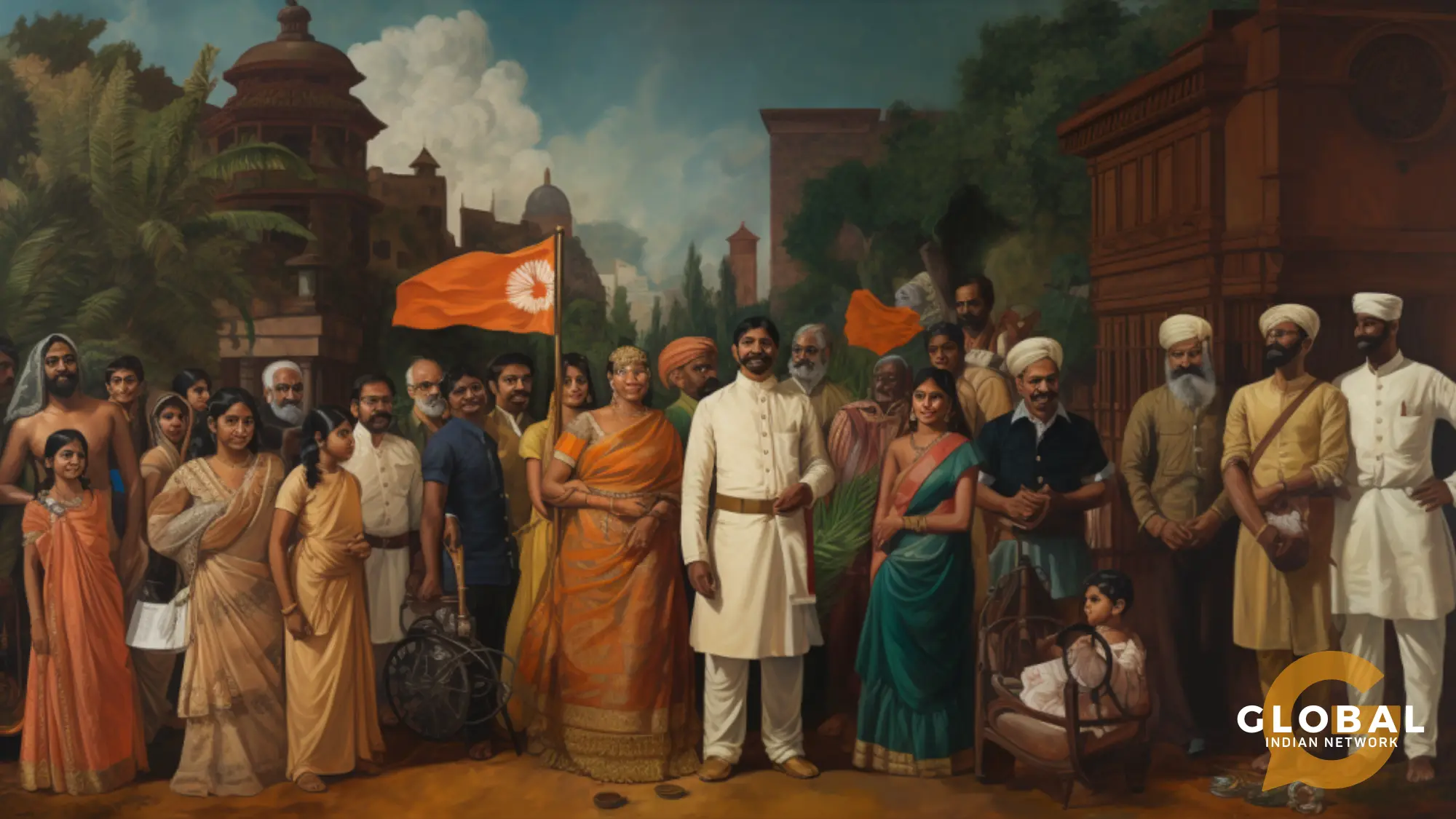The Anglo-Indian Community is a distinct cultural group that emerged during the British colonial era in India. It is characterised by a unique blend of British and Indian heritage, influenced by intermarriage and cultural exchanges.
Due to migration and changing demographics, the population has declined over the years. Despite this, they remain prominent in India’s cultural landscape, with their rich heritage, traditions, and contributions to various fields like literature, music, sports, and education.
Embark on a journey through the captivating world of Anglo-Indian life, where British elegance merges with Indian vibrance, unveiling a rich tradition and unique cultural tapestry.
Table of Contents
Origin and History
The Anglo-Indians originated during the colonial and British era in India. As the British established their rule in India, a significant number of British men arrived in the country as soldiers, traders, and administrators. Interactions between British men and Indian women led to the formation of mixed-race families, giving rise to the Anglo-Indians.
Socially and culturally, they developed their own unique identity. They adopted elements from both British and Indian cultures, blending traditions, languages, and customs to form a rich base for the Anglo-Indian culture and Anglo-Indian traditions. English became the primary language spoken in Anglo-Indian households, while Indian customs, clothing styles, and cuisine were also embraced. This fusion created a distinct cultural heritage for the community.
In terms of their role in colonial administration, many Anglo-Indians held positions in the British Raj. They served as interpreters, clerks, and assistants to British officials. Due to their bilingual abilities and understanding of British and Indian cultures, they acted as intermediaries between the British rulers and the local Indian population. Anglo-Indians played crucial roles in facilitating communication, managing administrative affairs, and maintaining colonial control.
Their history during the colonial and British eras reflects their unique position as a mixed-race community that contributed to the social, cultural, and administrative fabric of British India.
Demographics and Identity
The Anglo-Indian Community has a diverse demographic and a distinct cultural identity. Regarding population distribution, they were concentrated in regions where British influence was prominent during the colonial era, such as Kolkata, Chennai, Mumbai, and other major cities in India.
Language played a crucial role in shaping their identity. English became the primary language spoken within the community, inherited from their British ancestors. However, a unique dialect, “Anglo-Indian English”, emerged, characterized by a blend of English, Hindi, and other Indian languages.
Culturally, they exhibit a fusion of British and Indian customs. They celebrate festivals like Christmas, Easter, and Diwali, incorporating elements from both traditions. Anglo-Indian cuisine is renowned for its distinctive flavours, blending British recipes with Indian spices. Dishes like Mulligatawny soup, ball curry, and railway mutton curry are iconic examples of the same.
Their mixed heritage shapes their identity, embracing both British and Indian influences. They have preserved their unique cultural practices and traditions, including music, dance, and attire, contributing to their vibrant and diverse identity.
Their demographics are influenced by historical factors and are concentrated in specific regions of India. Their identity is shaped by adopting the English language, the fusion of British and Indian cultural practices, and the renowned Anglo-Indian cuisine that reflects their rich heritage.
Challenges and Issues
The Anglo-Indian Community has encountered significant challenges and issues throughout its existence, particularly in the realms of assimilation and cultural changes, as well as discrimination and prejudice. Assimilation and cultural differences pose hurdles as the community strives to preserve its unique Anglo-Indian heritage while adapting to evolving societal norms. With time, influences from the dominant cultures of India and the United Kingdom have led to shifts in language, customs, and traditions within the community. Balancing the preservation of their distinctive identity with the pressures of modernization can be a delicate task.
Discrimination and prejudice have been persistent problems for them. Their mixed heritage and distinct cultural background have made them targets of discrimination from British and Indian societies. Anglo-Indians have often experienced limited opportunities and unequal treatment in education, employment, and social interactions. Prejudice has also manifested as stereotypes and misconceptions about their identity.
Conclusion
Despite facing challenges of assimilation and discrimination, the Anglo-Indian Community has preserved its distinct identity and made notable contributions in various fields. Their future prospects are promising as society embraces diversity and inclusivity.
Their rich traditions and cultural practices will continue to be cherished and celebrated, ensuring their enduring presence and influence. As they navigate the evolving landscape, the community is poised to play an essential role in fostering cultural exchange, enriching global diversity, and forging a more inclusive and harmonious future.
FAQs
Who represents the Anglo-Indian Community?
Representatives of the Anglo-Indians include community leaders, activists, professionals, artists, and organizations working towards preserving their heritage and addressing their concerns. They advocate for the rights and interests of the community, fostering engagement and shaping its future.
Who is called Anglo?
“Anglo” refers to individuals or groups with English or British ancestry or cultural connections. It can denote people who identify with English or British culture or have a historical link to England or the United Kingdom. In the context of the Anglo-Indians, “Anglo” pertains to individuals of mixed British and Indian heritage. However, its meaning may vary depending on the context and region.
What is the meaning of Anglo-Indian ladies?
“Anglo-Indian ladies” refers to women of mixed British and Indian heritage within the Anglo-Indians. They embody the cultural fusion of their ancestry and may have distinct practices and experiences that reflect their dual heritage.
What is the word for Anglo-Indian?
The word for “Anglo-Indian” is simply “Anglo-Indian.” It describes individuals of mixed British and Indian heritage, emphasizing their cultural fusion and shared experiences.










[…] this blog, let us unveil the captivating saga of London's Indian community, traversing from its historical origins to cultural vitality and prosperous enterprises. Join us in […]
[…] Alfred Prasad was born and raised under the hybrid influence of his Tamil Brahmin father and Anglo-Indian mother from Hyderabad. His childhood home was a delightful fusion of culinary traditions, where he […]